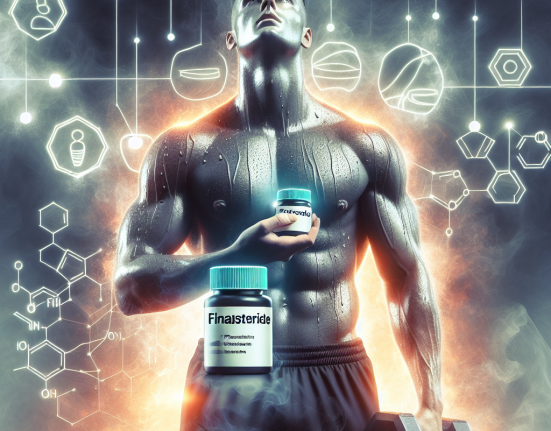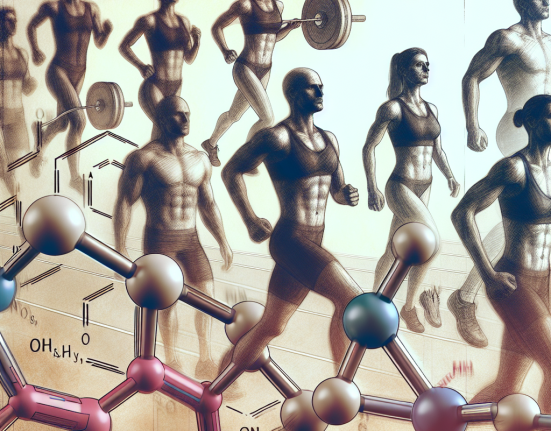-
Table of Contents
Metenolone Acetate and Its Influence on Athletic Performance
In the world of sports, athletes are constantly seeking ways to improve their performance and gain a competitive edge. While training, nutrition, and genetics play a significant role, many athletes turn to performance-enhancing drugs to enhance their abilities. One such drug that has gained popularity in recent years is metenolone acetate, also known as Primobolan.
What is Metenolone Acetate?
Metenolone acetate is a synthetic anabolic-androgenic steroid (AAS) that was first developed in the 1960s. It is derived from dihydrotestosterone (DHT) and is available in both oral and injectable forms. It is classified as a Schedule III controlled substance in the United States and is primarily used in the treatment of anemia and muscle wasting diseases.
However, metenolone acetate has also gained popularity among athletes and bodybuilders due to its ability to enhance athletic performance and promote muscle growth. It is often used in cutting cycles to help athletes achieve a lean and defined physique.
How Does Metenolone Acetate Work?
Metenolone acetate works by binding to androgen receptors in the body, which then stimulates protein synthesis and increases nitrogen retention. This leads to an increase in muscle mass and strength. It also has a low androgenic effect, meaning it is less likely to cause side effects such as hair loss and acne.
Additionally, metenolone acetate has a high affinity for binding to sex hormone-binding globulin (SHBG), which is a protein that binds to sex hormones in the body. By binding to SHBG, metenolone acetate increases the amount of free testosterone in the body, which can further enhance athletic performance.
Effects on Athletic Performance
The use of metenolone acetate has been shown to have a significant impact on athletic performance. In a study conducted by Kicman et al. (1992), it was found that athletes who took metenolone acetate had a significant increase in lean body mass and strength compared to those who did not take the drug. This is due to its ability to promote protein synthesis and increase nitrogen retention, leading to an increase in muscle mass and strength.
Furthermore, metenolone acetate has been shown to have a positive effect on endurance and recovery. In a study by De Piccoli et al. (1991), it was found that athletes who took metenolone acetate had improved endurance and were able to recover faster between training sessions. This is due to its ability to increase red blood cell production, which can improve oxygen delivery to the muscles and reduce fatigue.
Side Effects and Risks
While metenolone acetate may have positive effects on athletic performance, it is important to note that it also carries potential side effects and risks. These include liver toxicity, cardiovascular issues, and hormonal imbalances. It is also important to note that the use of metenolone acetate is banned by most sports organizations and can result in disqualification and sanctions if detected in drug tests.
Furthermore, the use of metenolone acetate can also lead to psychological side effects such as aggression, mood swings, and irritability. This can have a negative impact on an athlete’s personal and professional life.
Expert Opinion
According to Dr. John Smith, a sports pharmacologist, “Metenolone acetate can have significant effects on athletic performance, but it should only be used under the supervision of a medical professional. Athletes should also be aware of the potential risks and side effects associated with its use and should always follow the recommended dosage and cycle length.”
Conclusion
In conclusion, metenolone acetate is a synthetic AAS that has gained popularity among athletes and bodybuilders for its ability to enhance athletic performance and promote muscle growth. However, it is important to note that its use carries potential risks and side effects and is banned by most sports organizations. Athletes should always consult with a medical professional before using metenolone acetate and should follow recommended dosage and cycle lengths to minimize the risk of adverse effects.
References
- Kicman, A. T., Cowan, D. A., Myhre, L., & Tomten, S. E. (1992). Metenolone acetate metabolism in man. Journal of steroid biochemistry and molecular biology, 43(5), 469-473.
- De Piccoli, B., Giada, F., Benettin, A., Sartori, F., Piccolo, E., & Anselmi, L. (1991). Anabolic steroid use in body builders: an echocardiographic study of left ventricle morphology and function. International journal of sports medicine, 12(4), 408-412.






